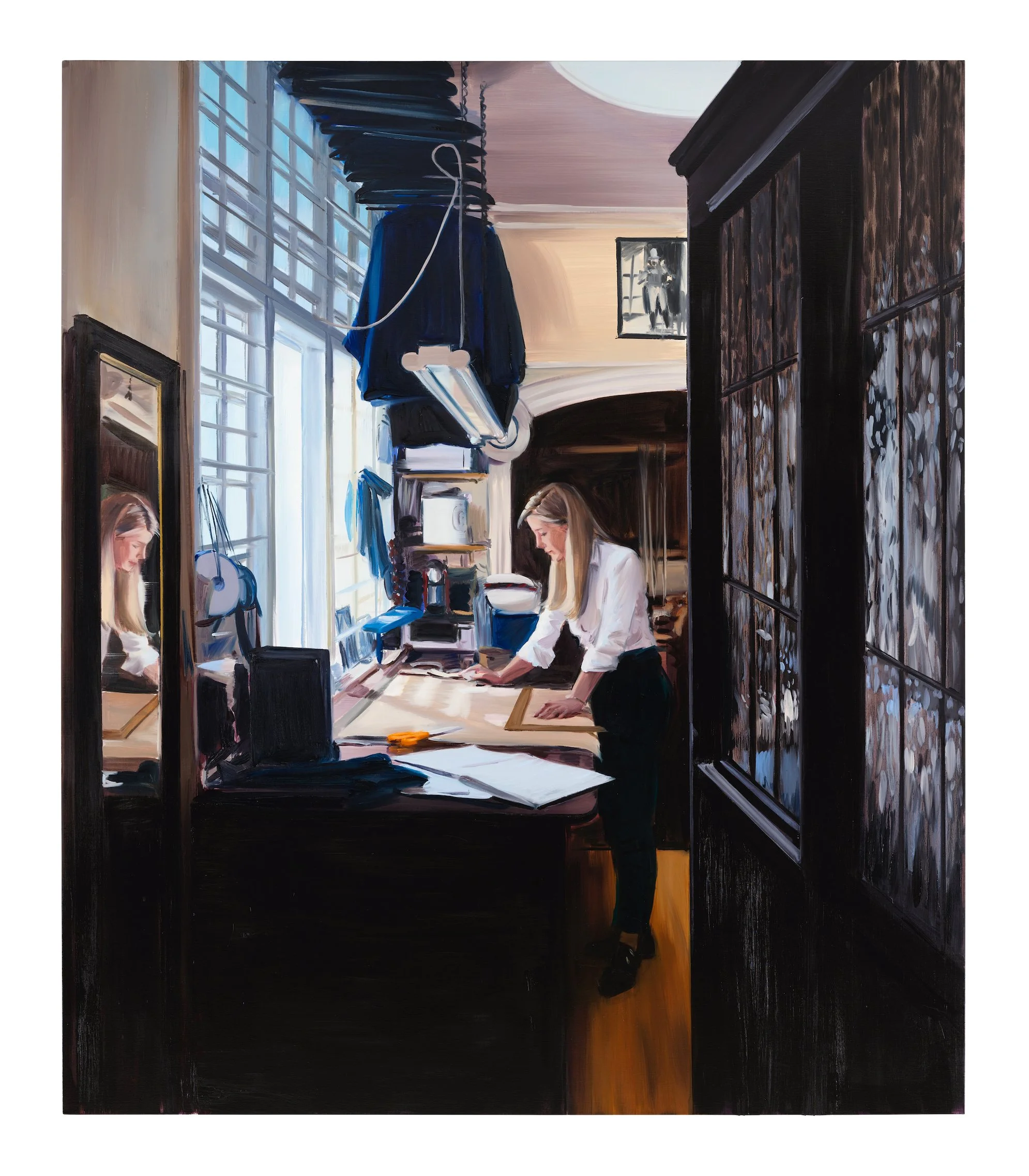Editor’s Note
In Caroline Walker’s world, light is both narrator and witness. It moves with intent, sliding across tiled walls, lingering on the curve of a shoulder, pausing on the rhythm of a hand at work. Within these interiors, light becomes language: it translates the gestures that sustain the day, the quiet endurance of care.
Her paintings inhabit the delicate space between intimacy and distance. A woman in labor, another bent over fabric, a child framed by the gold of late afternoon; each figure absorbed in her task, each moment alive with its own quiet gravity. Walker’s gaze listens rather than intrudes. Her attention transforms the ordinary into revelation.
The window recurs as a threshold, a hinge between worlds. It divides and connects, opening the private toward the visible. Through it, we remember that to see is never neutral, and that every act of looking asks for presence, humility, and compassion.
Her palette carries the hush of reflection: pale greys, muted golds, the tender whites of early light. Within them, the domestic turns luminous. What might once have been seen as confinement becomes expansion; what was repetition becomes rhythm. Walker’s realism is not descriptive but devotional, a meditation on patience, dignity, and the unseen labor that holds life together.
Each canvas is an offering to attention, a gesture of stillness within motion. Through them, we are invited to rediscover the moral weight of care, to sense that beauty does not exist apart from work, and that meaning begins wherever light touches the ordinary.
Walker’s interiors are not rooms but states of consciousness, spaces where the visible world slows, and what endures is not spectacle but tenderness.












![Sauna, 2015 [3 panels] | Oil on board | 37 x 30 cm [Each] | © Caroline Walker. Courtesy the Artist; GRIMM, Amsterdam/New York/
London; Ingleby Gallery, Edinburgh; and Stephen Friedman Gallery, London and
New York. Photo: Peter Mallet](https://images.squarespace-cdn.com/content/v1/656b9fdfa5c898754269e8d3/9847e27e-5657-4d88-86dd-3416c13e0ed2/JPEG_Sauna_2014_oil+on+board_3+panel_each+panel_37+x+30cm_Panel+1.jpg)
![Sauna, 2015 [3 panels] | Oil on board | 37 x 30 cm [Each] | © Caroline Walker. Courtesy the Artist; GRIMM, Amsterdam/New York/
London; Ingleby Gallery, Edinburgh; and Stephen Friedman Gallery, London and
New York. Photo: Peter Mallet](https://images.squarespace-cdn.com/content/v1/656b9fdfa5c898754269e8d3/adbbfc32-7cbd-4624-a22b-79ed833d5395/JPEG_Sauna_2014_oil+on+board_3+panel_each+panel_37+x+30cm_Panel+2.jpg)
![Sauna, 2015 [3 panels] | Oil on board | 37 x 30 cm [Each] | © Caroline Walker. Courtesy the Artist; GRIMM, Amsterdam/New York/
London; Ingleby Gallery, Edinburgh; and Stephen Friedman Gallery, London and
New York. Photo: Peter Mallet](https://images.squarespace-cdn.com/content/v1/656b9fdfa5c898754269e8d3/4b106920-8862-493e-94aa-a03dbc0961b4/JPEG_Sauna_2014_oil+on+board_3+panel_each+panel_37+x+30cm_Panel+3.jpg)

